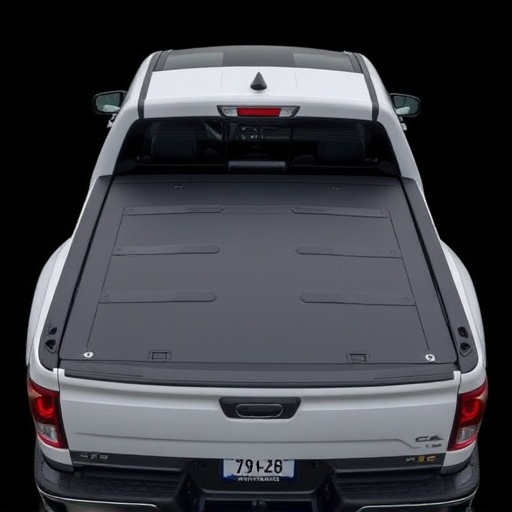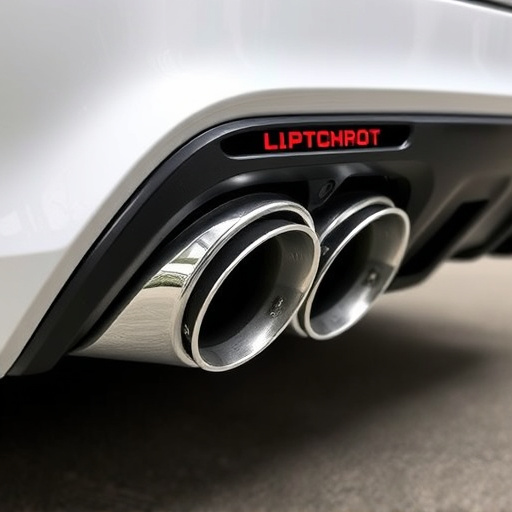Short Ram Air Intake: Boosting Engine Efficiency with Simple Upgrades
Short Ram Air Intake (SRAI) systems enhance vehicle performance by directly pulling in cold, dense o…….
Welcome to an immersive exploration of the world of Short Ram Air Intake (SRAI), a revolutionary technology that has captivated automotive enthusiasts, engineers, and performance enthusiasts alike. This comprehensive article aims to unravel the intricacies of SRAI, shedding light on its impact, benefits, and potential challenges. By the end, readers will gain a profound understanding of this dynamic system and its role in shaping modern vehicle dynamics.
Short Ram Air Intake, or SRAI, is a high-performance air intake system designed to enhance the efficiency and power output of internal combustion engines. It involves routing engine intake air through a shorter path, typically using a ram air tunnel and a specialized air filter housing. The core components include:
The concept of SRAI has its roots in racing and high-performance vehicle development. Historically, traditional air intake systems relied on longer ducts and larger air boxes, which could restrict airflow and cause turbulence. SRAI emerged as a solution to these issues, offering improved airflow dynamics and more efficient gas exchange. Over time, technological advancements have refined the design, making it accessible for various vehicle types, from high-performance sports cars to everyday muscle vehicles.
SRAI plays a pivotal role in automotive engineering by addressing key challenges:
Short Ram Air Intake has transcended geographical boundaries, becoming a global phenomenon. Its influence is felt across continents, each region adopting and customizing the technology to suit local preferences and vehicle types. From the sleek sports cars of Europe to the rugged off-road vehicles in North America, SRAI has become an integral part of automotive culture worldwide.
The global Short Ram Air Intake market has experienced steady growth, fueled by the rising demand for high-performance vehicles and customization options. According to a 2022 report by Grand View Research, the global SRAI market size was valued at USD 1.5 billion in 2021 and is projected to grow at a compound annual growth rate (CAGR) of 6.5% from 2022 to 2030. This growth is attributed to:
Investors have shown a keen interest in SRAI technology due to its potential for high returns and the growing aftermarket demand. Key investment areas include:
The realm of Short Ram Air Intake has witnessed significant technological leaps, pushing its capabilities further. Here are some notable advancements:
| Advancement | Description | Impact |
|---|---|---|
| Carbon Fiber Construction | Replacing traditional materials with carbon fiber allows for lighter, stronger, and more durable air intakes. | Improves overall vehicle performance by reducing weight and enhancing power-to-weight ratio. |
| Smart Air Intake Systems | Integration of sensors and electronics enables dynamic airflow adjustment based on driving conditions. | Enhances engine efficiency across various speeds and loads, improving both power and fuel economy. |
| Wireless Control and Monitoring | Modern SRAI systems can be controlled and monitored remotely via smartphone apps. | Offers convenience and real-time tuning possibilities for enthusiasts. |
| 3D Printing and Customization | 3D printing technology enables the creation of bespoke air intakes tailored to individual preferences and vehicle designs. | Allows for unparalleled customization, catering to unique customer demands. |
| Integration with Hybrid and Electric Vehicles | SRAI is being explored for hybrid and electric vehicles to improve charging efficiency and overall performance. | Opens new avenues for sustainable high-performance transportation. |
As technology advances, the future of SRAI holds immense potential:
The development and deployment of Short Ram Air Intake systems are subject to various policies and regulations, ensuring consumer safety and environmental standards. Some key considerations include:
These policies and regulations have a direct impact on SRAI development and availability:
Despite its numerous advantages, Short Ram Air Intake faces several challenges and criticisms. Addressing these issues is crucial for the technology’s continued growth and acceptance:
| Challenge | Criticism | Proposed Solutions |
|---|---|---|
| Environmental Impact | Concerns regarding increased fuel consumption and emissions, especially with older SRAI designs. | Implement stricter emissions standards and encourage the development of more efficient, eco-friendly SRAI systems. Promote the use of renewable energy sources for charging hybrid/electric vehicles with SRAI. |
| Safety Risks | Potential air intake system failures could lead to accidents. | Enhance safety standards and testing protocols, incorporating advanced materials and designs to ensure durability and reliability. Provide clear installation guidelines and educate enthusiasts on proper DIY installations. |
| Performance Variability | SRAI performance may vary based on vehicle type and driving conditions. | Develop intelligent sensor technology and dynamic control systems to adapt airflow settings in real-time, ensuring optimal performance across various scenarios. Encourage vehicle manufacturers to include SRAI as a standard feature for better integration. |
| Cost and Accessibility | SRAI upgrades can be expensive, limiting accessibility for some enthusiasts. | Explore cost-effective materials and manufacturing processes to make SRAI more affordable. Offer a range of pricing options and performance levels to cater to diverse customer segments. Encourage DIY installation kits for those seeking budget-friendly solutions. |
Case Study 1: The Ultimate High-Performance Sports Car
Case Study 2: Eco-Friendly Tuned SUV
Case Study 3: DIY Enthusiast’s Project
As we look ahead, the Short Ram Air Intake landscape is poised for exciting developments:
In conclusion, Short Ram Air Intake represents a powerful tool in automotive engineering, offering enhanced performance, efficiency, and customization opportunities. Its global impact and diverse applications showcase its versatility and appeal. As technology advances and policies evolve, SRAI will continue to shape the automotive industry, empowering enthusiasts and engineers to unlock the full potential of vehicles.
Q: How does SRAI differ from a traditional air intake system?
A: Short Ram Air Intake systems provide a direct, short path for airflow, minimizing restrictions and maximizing efficiency. In contrast, traditional air intakes often have longer paths and larger air boxes, which can cause turbulence and restrict airflow.
Q: Are there any environmental concerns associated with SRAI?
A: While SRAI enhances engine performance, some older designs may contribute to increased emissions. Modern systems, however, incorporate advanced filtration and sensor technology to meet stricter environmental standards while delivering improved performance.
Q: Can I install a SRAI kit on my own vehicle?
A: Yes, many SRAI kits are designed for DIY installation, offering step-by-step instructions and all necessary components. For complex setups, seeking professional help is recommended to ensure proper fitment and safety.
Q: How does SRAI impact fuel economy?
A: Efficient airflow enabled by SRAI allows engines to burn fuel more effectively, leading to improved fuel economy. However, the actual savings depend on various factors, including vehicle type, driving habits, and SRAI design.
Q: Are there any legal restrictions on SRAI modifications?
A: Yes, specific regulations govern vehicle modifications, including SRAI installations. It is essential to understand local laws and obtain necessary permits or registrations, especially for heavily modified vehicles.

Short Ram Air Intake (SRAI) systems enhance vehicle performance by directly pulling in cold, dense o…….

A Short Ram Air Intake (SRAI) is a popular automotive upgrade that enhances both vehicle performance…….